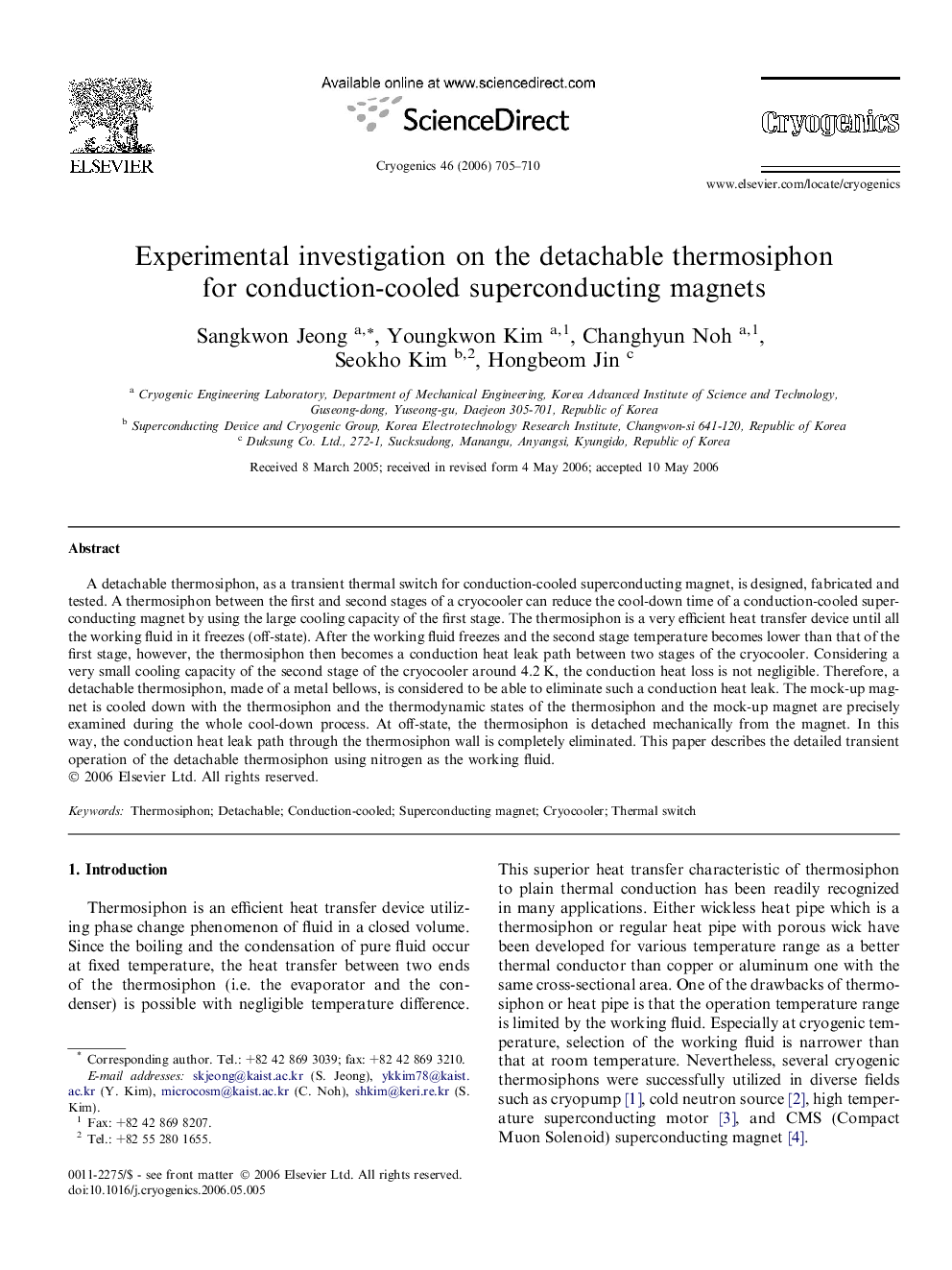| Article ID | Journal | Published Year | Pages | File Type |
|---|---|---|---|---|
| 1508525 | Cryogenics | 2006 | 6 Pages |
A detachable thermosiphon, as a transient thermal switch for conduction-cooled superconducting magnet, is designed, fabricated and tested. A thermosiphon between the first and second stages of a cryocooler can reduce the cool-down time of a conduction-cooled superconducting magnet by using the large cooling capacity of the first stage. The thermosiphon is a very efficient heat transfer device until all the working fluid in it freezes (off-state). After the working fluid freezes and the second stage temperature becomes lower than that of the first stage, however, the thermosiphon then becomes a conduction heat leak path between two stages of the cryocooler. Considering a very small cooling capacity of the second stage of the cryocooler around 4.2 K, the conduction heat loss is not negligible. Therefore, a detachable thermosiphon, made of a metal bellows, is considered to be able to eliminate such a conduction heat leak. The mock-up magnet is cooled down with the thermosiphon and the thermodynamic states of the thermosiphon and the mock-up magnet are precisely examined during the whole cool-down process. At off-state, the thermosiphon is detached mechanically from the magnet. In this way, the conduction heat leak path through the thermosiphon wall is completely eliminated. This paper describes the detailed transient operation of the detachable thermosiphon using nitrogen as the working fluid.
